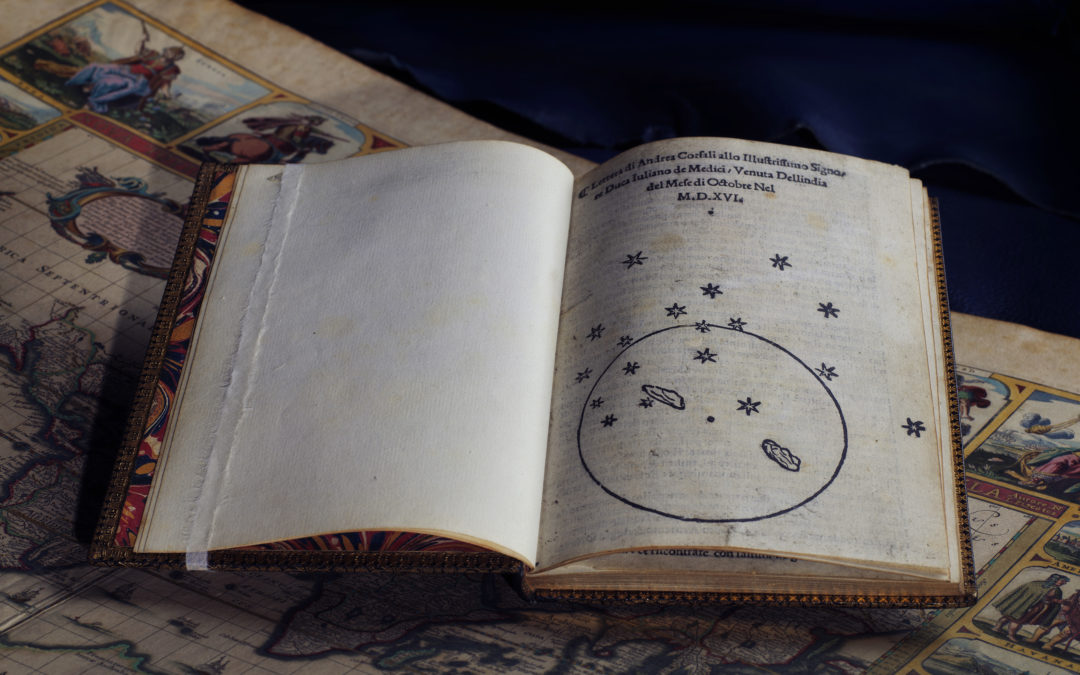Image courtesy of the State Library of New South Wales
The letter was sent by Corsali to his patron in 1516 where he describes the distinct array of stars pointing towards the South Pole as “a marveylous crosse”.
According to State Librarian Dr John Vallance: “It is an extraordinarily rare and evocative piece which documents for the first time in a European context the constellation that has become our national symbol.”
“The State Library was determined to secure this letter for the people of Australia – and it succeeded with the support of the State Library Foundation,” said Dr Vallance.
The printed letter, one of only four copies known to exist, is a sensational addition to the Library’s unrivalled collection relating to the exploration of the Southern Oceans and the European discovery of Australia.
Under the patronage of Guiliano de’ Medici, 28 year‐old Corsali sailed on a Portuguese ocean voyage from Lisbon to Cochin (Kochi), India. Corsali sent his patron two letters from India detailing the people and places he saw during his travels to India via the Cape of Good Hope, where he observed from his ship the Southern Cross constellation for the very first time.
In the first letter Corsali describes: `…this crosse is so fayre and bewtiful that none other heavenly signe may be compared to it as may appear by this figure’.*
The Medici received the letter in October 1516 and just two months later arranged to have it privately printed by a small press in Florence, Italy.
“There was certainly secrecy surrounding this voyage, including why Corsali was sent in the first place,” said Maggie Patton, the State Library’s head curator. “It was a likely fact‐finding mission with Corsali’s letters possibly containing valuable intelligence to benefit the Medici’s trade interests in India.”
“The voyage nonetheless produced a drawing and a name for what is now the most iconic constellation in the southern sky. It also gave Australia a symbol that is now so familiar and celebrated people have it permanently inked on their bodies,” said Ms Patton.
You can read more about it here.
When: On display now.
Where: The State Library of New South Wales, Macquarie Street, Sydney
Contact: 02 9273 1414

